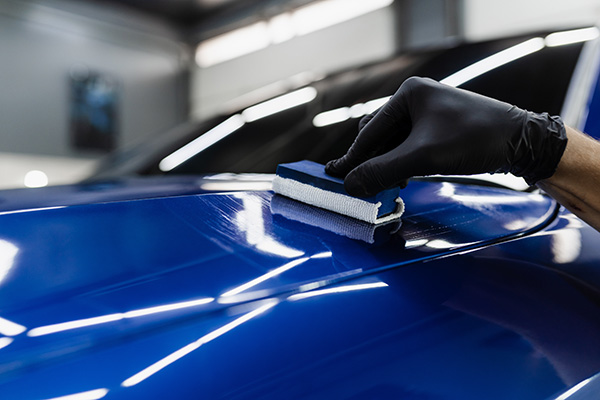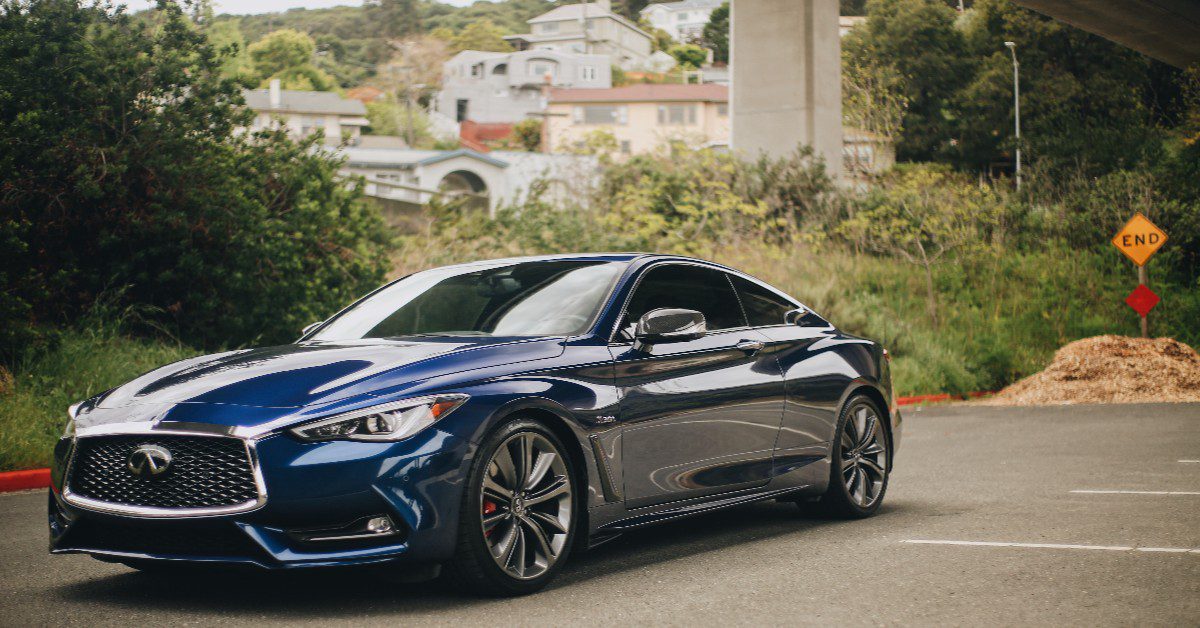Ceramic Coating vs. Conventional Wax: Which is Right for Your Vehicle?
Ceramic Coating vs. Conventional Wax: Which is Right for Your Vehicle?
Blog Article
The Role of Ceramic Coating in Shielding Your Cars and truck's Paint From Environmental Damage
Ceramic covering has actually arised as a sophisticated remedy for cars and truck owners looking for to preserve the honesty of their car's exterior. By developing a robust chemical bond with the paint, this sophisticated technology uses a formidable obstacle against different environmental dangers, such as UV rays, acid rain, and impurities. Recognizing the extensive advantages and the intricacies of the application procedure is essential for maximizing its performance. As we explore the subtleties of ceramic covering, it becomes obvious that the choice to apply this protective action might significantly affect your vehicle's durability and visual.
What Is Ceramic Coating?
Ceramic finishing is an innovative fluid polymer applied to the outside surface areas of a car, created to provide a durable layer of security for the paint. This ingenious option creates a chemical bond with the lorry's manufacturing facility paint, developing a resilient and hydrophobic shield. The finishing contains nanoparticles that fill out the tiny blemishes in the paint, resulting in a smooth surface that improves beam and gloss.
Typically, ceramic coverings are offered in various formulations, enabling for different degrees of defense and long life. While some products can last for several months, others provide security for a number of years, depending on the thickness of the application and environmental elements. The application process requires careful preparation, consisting of cleaning, decontaminating, and polishing the car's surface to ensure optimal adhesion of the finish.

Benefits of Ceramic Layer
Among the primary benefits of applying a ceramic coating is the phenomenal security it offers to auto paint. This sophisticated coating develops a durable layer that guards the vehicle's surface area from a variety of environmental threats, including UV rays, acid rainfall, bird droppings, and tree sap. By offering this durable defense, ceramic layers substantially decrease the threat of fading and etching, preserving the auto's aesthetic allure in time.
In enhancement to protection, ceramic layers are renowned for their hydrophobic properties, which ward off water and dust, making it much easier to keep a clean automobile. This self-cleaning effect minimizes the frequency of washing, saving both time and sources. In addition, ceramic layers enhance the deepness of the paint's gloss, resulting in a lively and sleek look that boosts the overall look of the automobile.
An additional noteworthy advantage is the longevity of ceramic finishings. Unlike standard waxes or sealers that call for constant reapplication, ceramic coatings can last several years, providing a cost-effective service for cars and truck proprietors looking for long-term protection. On the whole, buying ceramic layer leads to improved sturdiness, lowered maintenance, and continual aesthetic appeal for automobile paint.
Exactly How Ceramic Finish Functions
A ceramic finish runs via a chemical bonding process that creates a protective layer on the vehicle's paint surface area. This cutting-edge remedy utilizes sophisticated nanotechnology, where microscopic bits of silica are suspended in a liquid form - ceramic coating. Upon application, these particles bond with the manufacturing facility paint, creating a sturdy and hydrophobic layer that boosts the lorry's surface area
The primary component of ceramic finishings, silicon dioxide (SiO2), contributes to the covering's strength and strength. When treated, the finishing transforms right into a difficult, glass-like surface that shields the paint from environmental contaminants such as dust, UV rays, bird droppings, and tree sap. This molecular bond leads to a surface that is not only immune to scrapes however also less complicated to clean up, as dirt and crud are less most likely to adhere.
In addition, the hydrophobic homes of ceramic coatings trigger water to grain and slide off, minimizing the possibilities of water places and mineral deposits. This safety barrier properly lengthens the life of the paint and preserves the lorry's aesthetic charm, offering vehicle proprietors a durable remedy for paint protection.
Application Refine of Ceramic Finishing
When thinking about the application of ceramic coating, prep work is key to achieving ideal results. The primary step involves thoroughly cleaning the lorry to remove dirt, gunk, and contaminants from the surface area. This frequently includes a decontamination procedure utilizing clay bars or chemical cleaners to make sure the paint is flawlessly tidy. Any type of scrapes or flaws ought to be resolved at this phase, as the layer will bond with the surface area below.

Ceramic covering is then applied in small areas, normally using an applicator pad. It is crucial to function in even strokes, guaranteeing consistent coverage. The finishing should be enabled to cure for a defined time, which can differ depending upon the item utilized. After the first application, a premium microfiber towel is made use of to buff the surface, boosting gloss and guaranteeing a smooth coating. Ultimately, the vehicle ought to be entrusted to heal in a regulated atmosphere to enable the finish to fully bond with the paint.
Long-Term Upkeep and Care
Attaining a successful ceramic finishing application establishes the structure for long-lasting protection, however proper maintenance is essential to protecting its advantages. Regular cleaning is important; utilizing a pH-neutral cars and truck hair shampoo will certainly help preserve the layer's stability without causing damages. Avoid automated cars and truck cleans that usage abrasive materials, as they can endanger the finishing's surface area.

In addition, applying a ceramic coating maintenance look these up spray can boost the existing layer, giving an extra boost in security and shine. It's advisable to perform this every 3 to 6 months, depending upon ecological direct exposure.
Lastly, vehicle parking in shaded locations or utilizing auto covers can protect against prolonged exposure to harmful UV rays and environmental contaminants, additionally prolonging the life of your ceramic layer. By adhering to these upkeep techniques, you can ensure your car's coating stays secured and aesthetically appealing for years ahead.
Verdict
In recap, ceramic finishing works as a crucial safety step for vehicle paint, successfully securing lorries from a variety of environmental threats. Its ability to produce a durable hydrophobic barrier not just boosts aesthetic charm yet also substantially lowers the regularity and strength of upkeep required. The durable nature of this advanced polymer highlights its value in protecting car stability click to find out more and appearance, ultimately adding to a much more durable and visually enticing automobile coating.
Ceramic finish is a sophisticated fluid polymer applied to the exterior surface areas of a car, designed to give a resilient layer of protection for the paint. Ceramic layers improve the depth of the paint's gloss, resulting in a vivid and polished appearance that elevates the total look of the automobile.
A ceramic finishing operates with a chemical bonding procedure that produces a safety layer on the automobile's paint surface area.The primary part of ceramic finishings, silicon dioxide (SiO2), contributes to the finish's strength and strength.In recap, ceramic coating serves as an important protective procedure for vehicle paint, effectively securing cars from an array of ecological threats.
Report this page